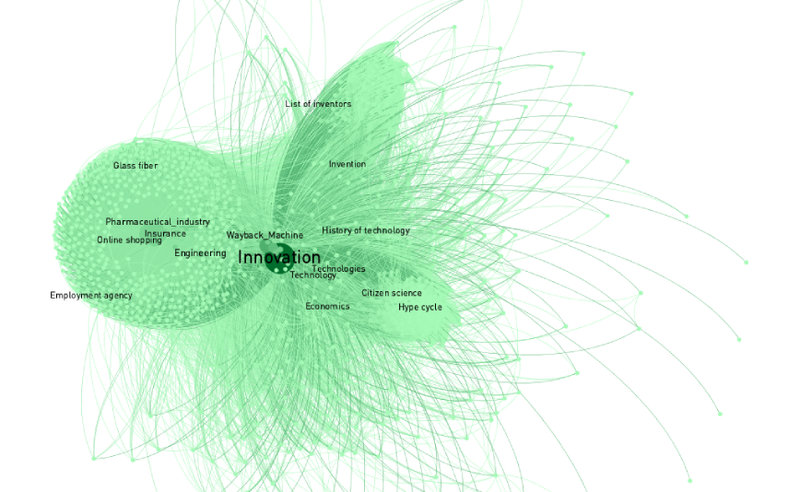Was ist Innovation? Nehmen wir als Beispiel den Kühlschrank: Ein innovativer Kühlschrank wird oft als smart verstanden. Mit einem Touchscreen ausgestattet, ans Internet angeschlossen, über eine App steuerbar, mit anderen smarten Haushaltsgeräten vernetzt und mit diversen Zusatzfunktionen ausgestattet. Mehr ist mehr.
Dass Innovation auch anders geht, zeigt der Mitticool-Kühlschrank vom indischen Töpfer Mansukh Prajapat. Nach einem Erdbeben stand er vor der Herausforderung, bei 50° Celsius Aussentemperatur und ohne Elektrizität Lebensmittel kühl zu halten. Er entwarf einen Kühlschrank aus Lehm, der dank hohlen Wänden und dem Prinzip der Verdunstung seinen Inhalt kühl hält und vor dem Verderben schützt. In einem Land, in dem mehr als 500 Millionen Menschen ohne zuverlässige Stromversorgung auskommen müssen, braucht es nicht nur smarte, vernetzte Kühlschränke. Vielmehr braucht es einfache, aber verlässliche Kühlschränke, die ohne Strom auskommen. «Wachstumsmärkte wie Indien, China, Brasilien und Kenia sind ein Nährboden für Ideen wie Mitticool, die Knappheit in Chancen verwandeln und aus weniger mehr machen», erklärt Professor Jaideep Prabhu von der Cambridge Judge Business School das Grundprinzip der frugalen Innovation.
Netzwerk «Innovation»
Trotz seines Potentials ist das Konzept in unseren Breitegraden noch wenig bekannt. Dies zeigt eine Netzwerkanalyse des GDI. Mit dem Programm Condor der Firma Galaxyadvisors wurden die Verlinkungen innerhalb von Wikipedia-Seiten untersucht. Damit wird sichtbar, wie wichtig ein Thema ist.
Im Wikipedia-Netzwerk des Begriffs Innovation sucht man die frugale Innovation vergebens. Obwohl sie ein wichtiger Bestandteil innovativen Schaffens ist, stehen im Innovationsnetzwerk vor allem High-Tech und komplexe Neuerungen im Vordergrund. So nehmen Begriffe wie Technology, Invention, Online Shopping, Engineering, Manufacturing oder History of Science im Netzwerk zentrale Positionen ein. Ausserdem bildet sich ein Cluster bestehend aus Bezeichnungen verschiedener Branchen, die im Kontext von Innovation verstanden werden. Dazu gehören unter anderem Bergbau, Versicherungen, Pharma, Einzelhandel, Tourismus, Schiffbau, Musik, Raumfahrt, Waffen oder der Finanzsektor.
Die Visualisierung des Netzwerks zeigt, dass Innovation einerseits sehr breit verstanden wird. Und dass sie andererseits einen Bias zu mehr Technik und mehr Komplexität, zu mehr Features, ausgeklügelteren Lösungen und Moonshot-Projekten hat.
 wiki_innovation.pdf
wiki_innovation.pdfNetzwerk «frugale Innovation»
Das Wikipedia-Netzwerk «frugale Innovation» sieht deutlich anders aus. Es ist weniger konzentriert und es bilden sich mehrere kleine Themen-Cluster, die aber nicht stark voneinander abgegrenzt, sondern eng miteinander verwoben sind. Zentrale Begriffe sind Open Innovation, Sustaining Innovation, Open Design, Reuse oder Problem Solving. Es geht hier nicht darum, die meisten, neusten oder besten Zusatzfeatures zu haben. Es geht darum, Opportunitäten zu schaffen, offene und zugängliche Lösungen zu entwickeln und mit den vorhandenen bescheidenen Mitteln einen Mehrwert zu generieren.
Simplify. Reduce. Degrow. Frugale Innovation am 18. Europäischen Trendtag
Frugale Innovation ist mehr als ein Begriff, es ist eine neue Denkhaltung. Wie frugale Innovation funktioniert, wie Unternehmen zu frugalen Geschäftsmodellen kommen und wie sich frugale Innovation mit Einfachheit und Schönheit verbinden lässt, erfahren Sie am Europäischen Trendtag 2022.

Twitter: #trendday2022